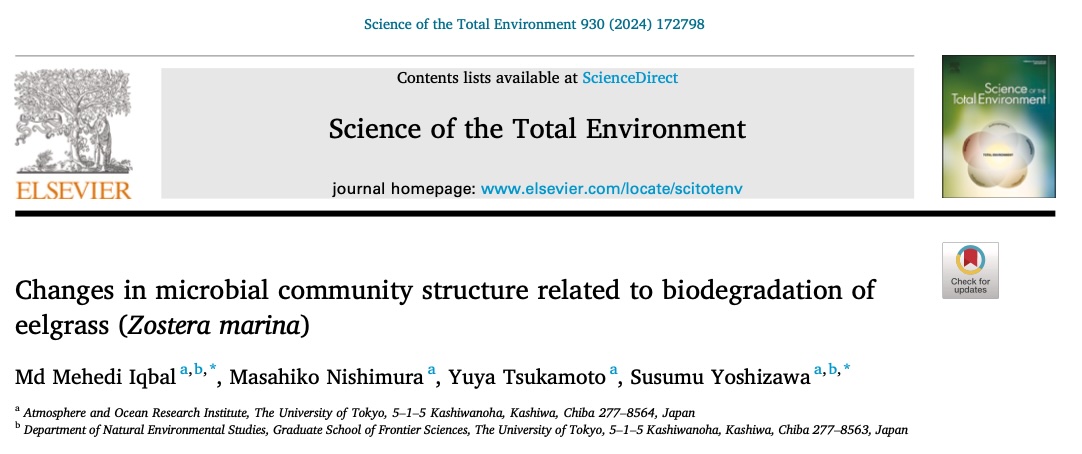NEWS
Dynamics of Marine Microbial Communities and Their Relationship with the C/N Ratio During Eelgrass Leaf Decomposition

Seagrasses such as Zostera marina (eelgrass) act as significant "blue carbon sinks," absorbing atmospheric carbon dioxide through photosynthesis and storing carbon in seafloor sediments via the deposition of decaying leaf material. In this study, we conducted a six-month microcosm experiment using eelgrass leaves and seawater collected from Tokyo Bay to investigate temporal changes in microbial communities during eelgrass decomposition. The results revealed a clear microbial succession: fast-growing taxa such as Gammaproteobacteria and Flavobacteriia rapidly colonized the leaf surfaces in the early phase and initiated decomposition, whereas slower-growing microbes such as Thaumarchaeota became dominant in the later stages, likely contributing to the degradation of more recalcitrant components such as cellulose and lignin. This microbial community shift was closely associated with changes in the carbon-to-nitrogen (C/N) ratio of the leaf detritus, highlighting a strong linkage between microbial succession and the biochemical progression of decomposition. These findings provide important insights into the microbial mechanisms underlying seagrass decomposition and the broader processes of marine carbon cycling.
https://www.sciencedirect.com/science/article/pii/S0048969724029450?via%3Dihub